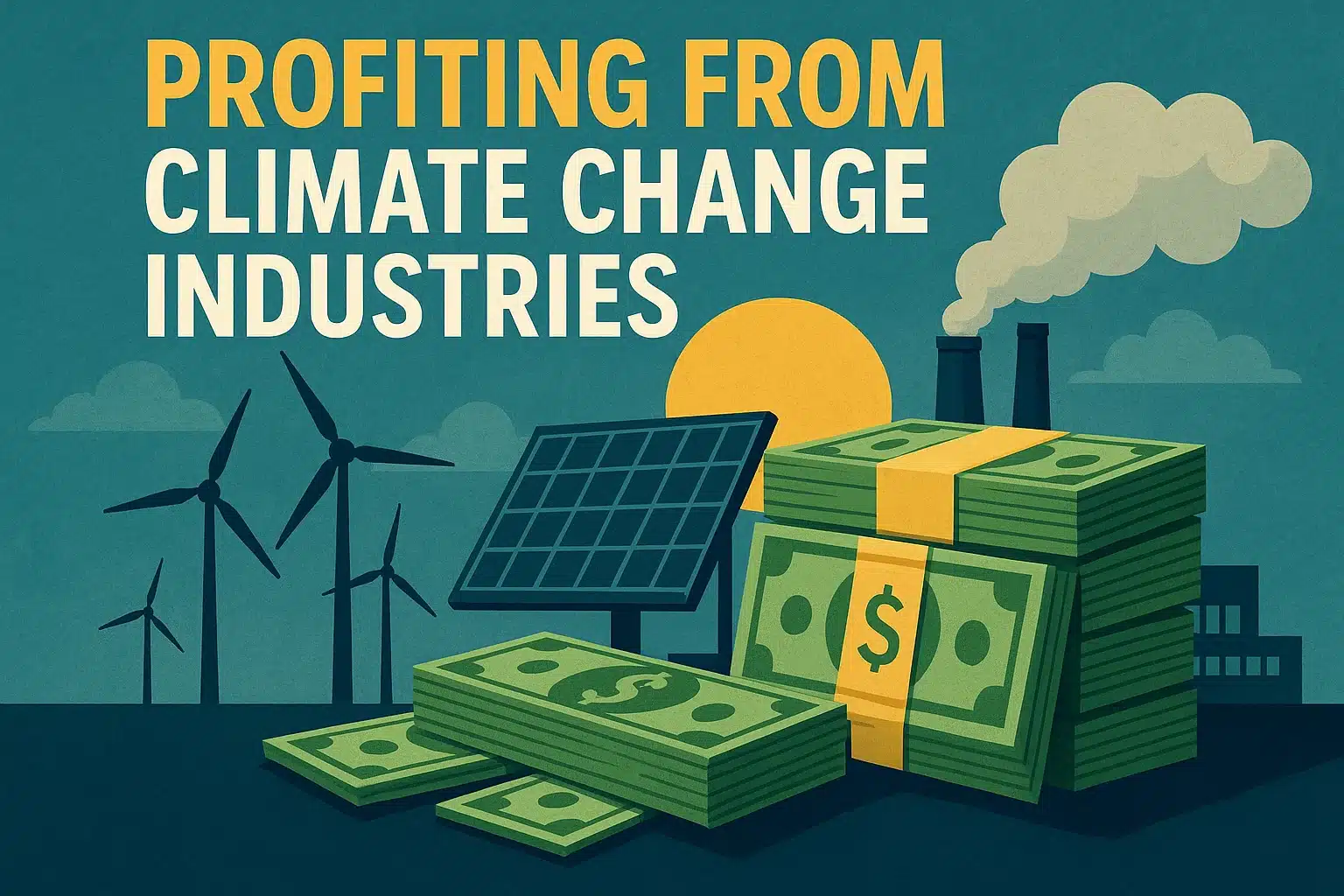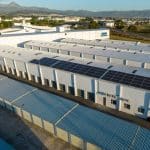Profiting from climate change industries isn’t about selling solar panels—it’s about recognizing where billions of dollars are flowing and plugging into untapped niches.
From resin suppliers for wind turbines to carbon fiber composites for EVs, you can get in early where governments are forced to fund the shift.
Where the Money Is Flowing
Governments worldwide are pouring incentives into clean tech markets. The global climate tech market is estimated at $38.5 billion in 2024, projected to hit $115 billion by 2030—a near 21% annual growth rate.
Even banks like Barclays are lending billions with returns above average from sustainable finance
That means entrenched players and startups alike are chasing new materials, low-carbon infrastructure, adaptation tools, and resilient supply chains. That’s your opportunity.
Materials & Manufacturing: Low-Level Entry, High Impact
Even humble parts like epoxy resin—used in wind turbine blades, composite fittings, Strom tubes—can turn into profit centers. The epoxy resin market is ramping up, as it makes up about 27% of wind turbine composite use in Europe alone.
Carbon fiber resin is also exploding. That market is projected to grow from under $1 billion in 2025 to over $4 billion by 2035 at 15% CAGR—used in aerospace, automotives, and clean‑energy gear
So if you can get a resin formula or small composite plant going, you’re tapping into high margin, fast-growing infrastructure markets.
Climate Tech Niches with Explosive Potential
Beyond renewables, other areas are ripe:
-
Carbon capture and sequestration (CCUS): Direct-air capture startups are hot, backed by regulatory tailwinds and corporate mandates
-
Long‑duration storage: Battery types like iron‑air, vanadium flow, and hydrogen storage are drawing big capital
-
Adaptation infrastructure: Projects like green stormwater parks and oyster reefs in flood zones are forecast to exceed $2 trillion globally by 2026
You don’t need to invent the wheel. You can build support tools or supply chain pieces for these domains and ride the wave.
How Entrepreneurs Actually Get In
-
Pick a subsector within climate change industries—materials, storage tech, carbon removal, adaptation spaces.
-
Research government programs in your region: tax credits, procurement programs, infrastructure grants.
-
Build around compliance needs, like recycling carbon fiber composites or bio‑epoxy alternatives—markets are just forming.
-
Partner with existing players, research labs, or clusters in places like China or EU where growth is fastest
You don’t need a billion-dollar plant. Start small with niche materials or specialized supply chain links—epoxy resin coatings, recycled composite panels for green transport, modular energy storage frames.
Why This Isn’t Just Another Fad
People want claims it’s “eco.” Investors want returns. Governments must reach net zero. That alignment makes profiting from climate change industries more stable than most startup ideas. It’s not fragile.
Even if one subsidy expires, the underlying demand keeps rising. Markets like carbon fiber resin companies, renewable energy tech, climate adaptation tools—all benefit from sustained demand, not hype.
TL;DR
-
Profiting from climate change industries means focusing on growth areas beyond solar panels—think resin supplies, carbon fiber composites, storage frames, adaptation infrastructure.
-
Government funding is relentless: the climate tech market is projected to triple by 2030, and early players are already making gains.
-
Real opportunities exist in low‑entry manufacturing like epoxy resin or recycled materials. You don’t need to build a wind farm—just feed one.
-
The time is now. When governments and firms sink public funds into decarbonization, being in the supply chain is how entrepreneurs make greedy returns—but also solve a crisis.
Read more – Inventors of Everyday Items That You Should Know About














